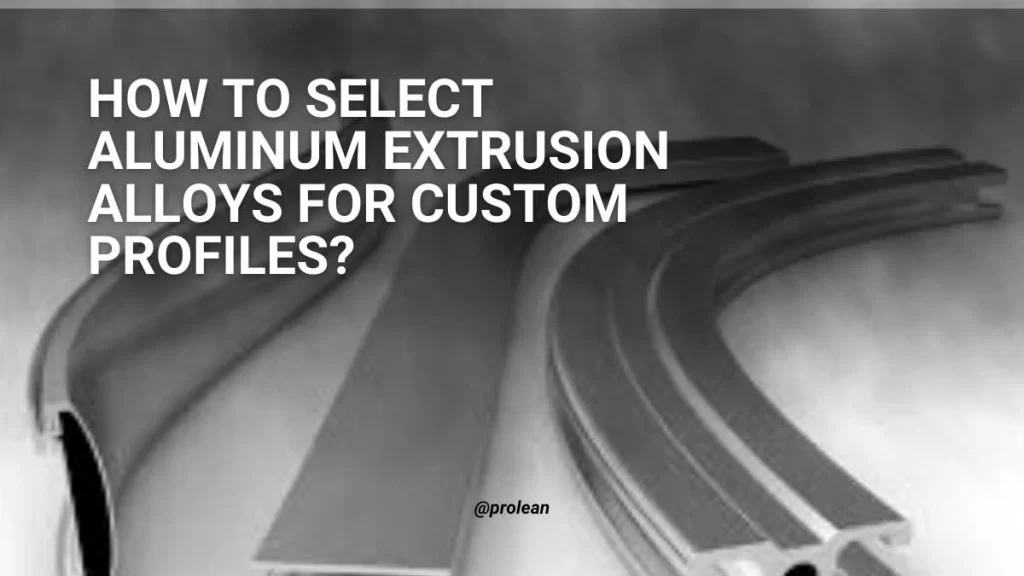
It’s cumbersome to choose from a variety of aluminum extrusion alloys. These alloys are specially formulated series of aluminum used in extrusion applications. Their properties depend on the specific alloying elements such as copper, silicon, magnesium, manganese, and zinc, which are added to achieve desired mechanical and chemical characteristics. Fashionably referred to as the 1, 2, 6, or 7 series, aluminum alloy families all have similar characteristics. These alloys are used in many manufacturing industries, including aviation, building construction, or cars, depending on need. The choice of an aluminum alloy is determined by the properties and desired performance of its mechanical characteristics for final products.
Considerations For Aluminum Alloy Extrusion Design
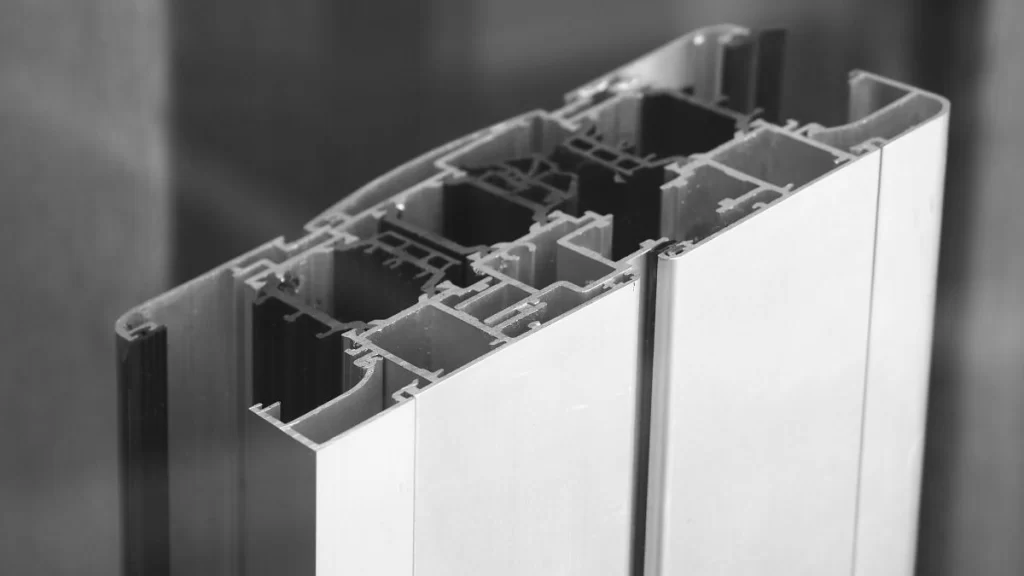
Aluminum Alloy Extruded Bars
There are many factors to consider when designing custom aluminum extrusion profiles out of 6061 Aluminum vs other alloys.
Circle Size
The circle size is a prominent factor. Not all manufacturers can handle any size you throw at them. When choosing a manufacturer, be sure that they can produce the size profiles you need.
Profile Weight per Foot
Profile weight per foot is also an important factor. It affects machinery operations and the machinery size required. Designers should bear in mind the aspects of shape for optimal extrusion. A high tongue ratio is not desirable; these make the extrusion process more complicated and the material flow harder to regulate.
Shape Considerations & Minimize Hollow Sections
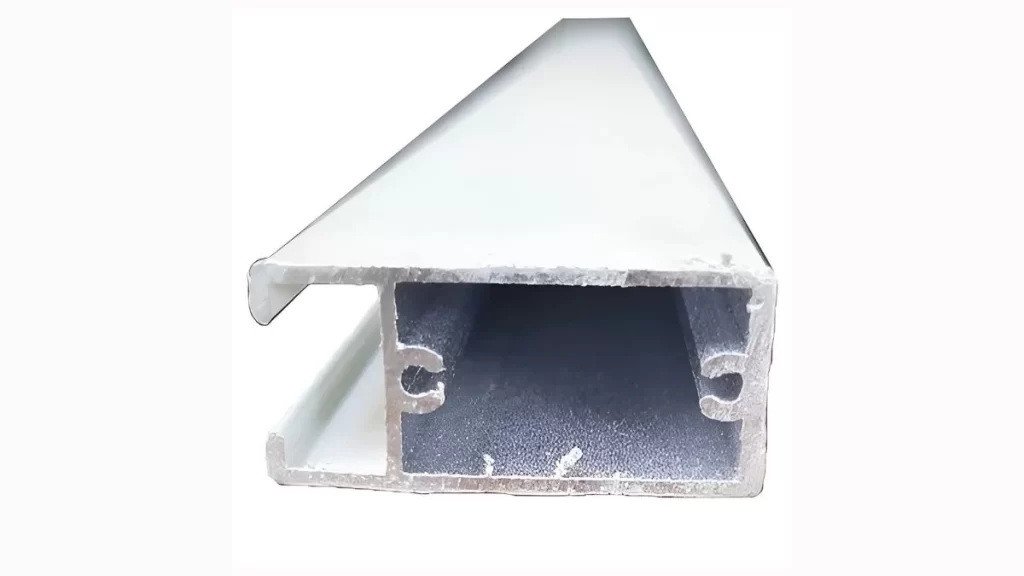
Minimal Hollow Extruded Bar
Ribs, grooves, and webs provide stability. Include broad tapers to verify appropriate material flows. The wall thickness should be even all around to prevent distortion. Minimize hollow sections so as not to waste material. When designing a part, make it symmetrical and avoid any asymmetry at all costs.
Extrusion Dies
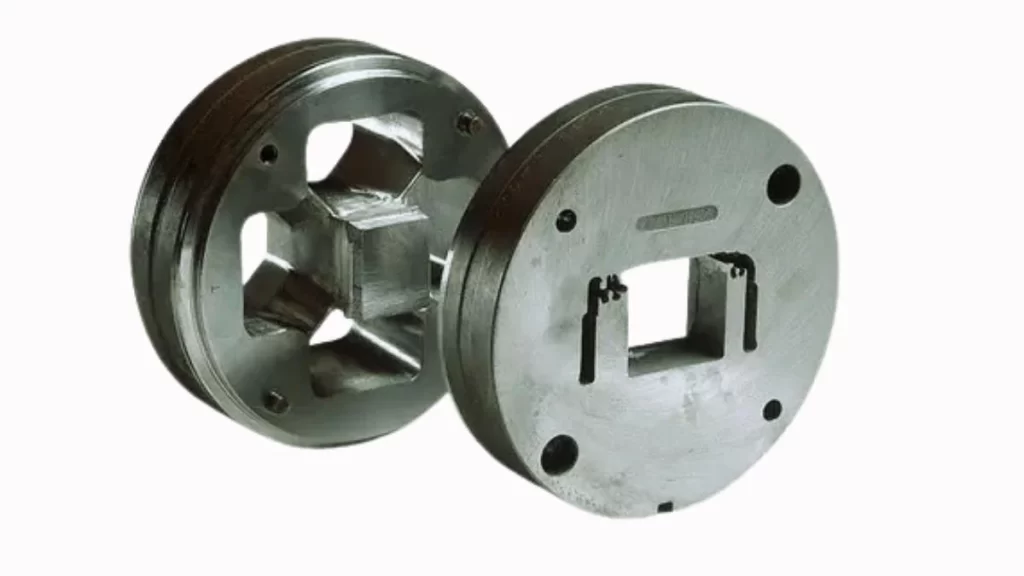
Aluminum Extrusion Dies
Extrusion dies comes in two main forms: direct and indirect. In the direct process, the billet moves against the container wall. In the indirect process, however, it’s the die that moves. The billet is pushed through it, developing its shape or form.
Mandrels for Hollow Shapes
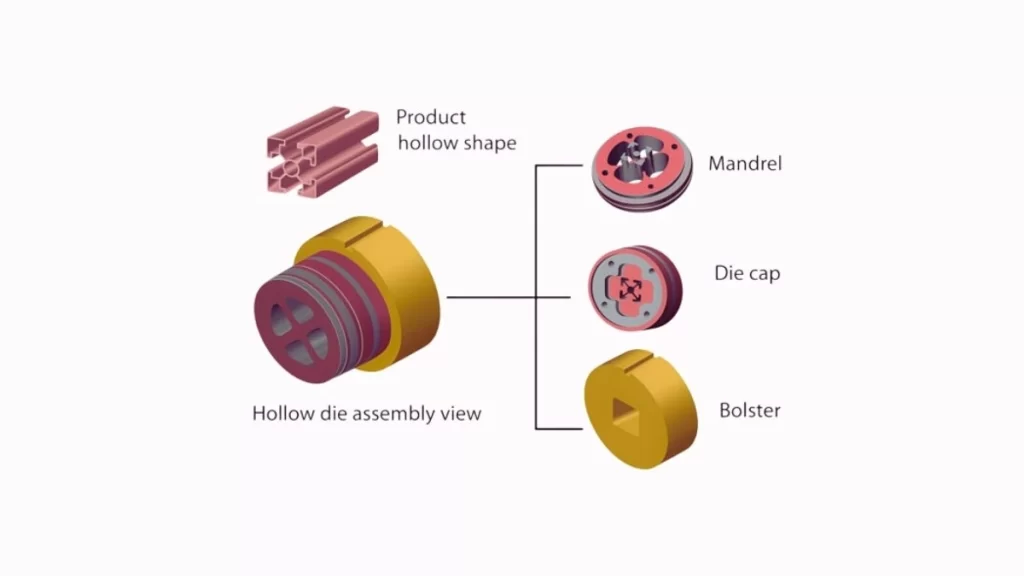
Die Mandrels for Hollow Shapes
Mandrels are inserted inside the die to make hollow shapes and tubes. They may be separate and integral parts of it.
Choose the Right Type of Die
There are usually three types of dies: porthole, bridge, and machined blanks. Porthole and bridge dies are used for hollow shapes. While machined blanks for solid profiles. Dies are normally made of A13 steel. These come in a hardness of about 47 to 51 Rockwell B.
Try Prolean Now!
15 Series Extruded Aluminum Alloys With Custom Profiles Dimensions
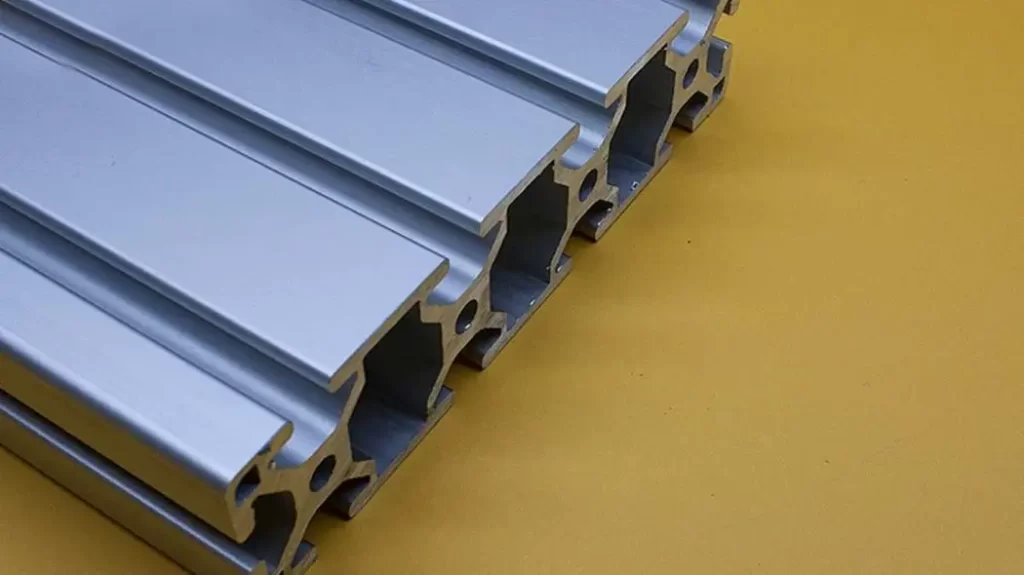
EX-1560L – 1.5″ x 6″ Smooth Lite T-Slotted
Here’s a table listing some common 15-series aluminum extrusions with additional columns: Dimensions & Applications.
| Profile | Dimensions | Applications | Material |
| EX-1575 | 1.5″ x 0.75″ | Lightweight framing | 6063-T5 |
| EX-1515 | 1.5″ x 1.5″ | Structural frames, Shelving units | 6063-T6 |
| EX-1530 | 1.5″ x 3″ | Larger frames, machinery bases | 6063-T5 |
| EX-1545 | 1.5″ x 4.5″ | Heavy-duty workstations | 6063-T6 |
| EX-1560 | 1.5″ x 6″ | Large-scale structures, frames | 6063-T5 |
Related To: 6061 vs. 7075 Aluminum Alloys
What Are The Types of Extruded Aluminum Alloys?
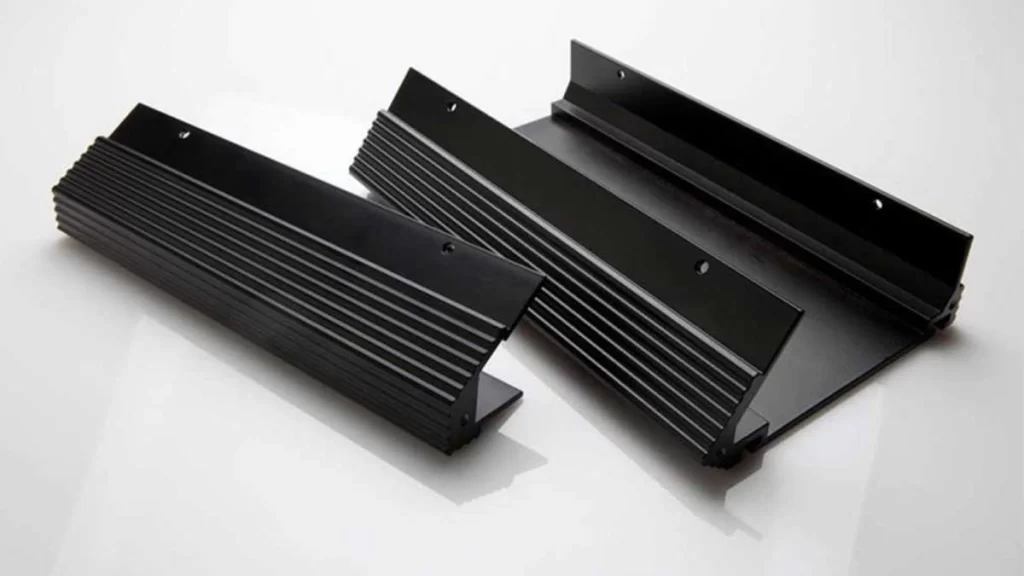
Finished Extruded Aluminum Profiles
Tri-state aluminum provides a diverse assortment of aluminum alloys for all your extrusion applications from the 2000, 6000, and 7000 series alloys. Each alloy gives unique features to the specific production requirements.
Series 1xxx: Comprised of 99% pure aluminum. 1xxx series offers excellent corrosion resistance and great workability for any application requiring high weldability, i.e., electrical conductors or chemical containers.
Besides, these are non-heat treatable alloys with high corrosion resistance and fair workability. Where you need a smooth surface finish, it is widely used, for example, in applications like roofing material, side panels, or heat exchangers.
5052: Offers high corrosion resistance and weldability. 5052 is suitable for use in marine, automotive, and chemical processing industries. Its high strength-to-weight ratio makes it a good choice for fuel tanks, pressure vessels, and areas exposed to sea spray and salt fog.
6063: Commonly used for decorative applications. 6063 has a great surface finish and works optimally for thin walls. Moreover, it can used to shape fine details parts, including architectural trim or window frames. The alloy has high corrosion resistance but lower weld strength than 6061.
6061: Stronger than 6063. 6061 is meant for structural applications such as transportation or machinery. Especially due to its high fracture toughness and good fatigue strength, it is adaptable to heavy-duty applications: automobile frames, aircraft structures, etc. (Read more about 3003 Aluminum vs 6061 Aluminum)
6082: 6082 has a higher strength than 6063 or 6061. It is commonly employed in the construction industry for heavy-duty applications such as bridges, cranes, and boats. Its highest strength-to-weight ratio and weather resistance make it the compels it a top choice out there for manufacturing parts.
7075: Popular in aerospace and military applications due to its high strength-to-weight ratio and fatigue resistance. However, it has poor corrosion resistance and weldability, making it less suitable for applications requiring welding or exposure to harsh environments without proper surface treatment
2024: This high-strength alloy is frequently used in aerospace and military applications due to its favorable weight-to-strength ratio and good fatigue resistance. Because of their properties, 2024 Aluminum extrusions are preferred for use in Aerospace structures like military hardware, high-stress components, and highly stressed components of military vehicles.
7050: A high-strength aluminum alloy having great resistance to stress corrosion cracking. 7050 is used primarily for aerospace applications such as fuselage and wing structures. It is especially suited for high performance aircraft components and performs well in harsh environments.
1100: 1100 is a commercially pure grade of aluminum with excellent corrosion resistance and workability. It finds extensive application in food processing and decorative purposes due to its excellent finish.
Try Prolean Now!
Practical Considerations For Developing Custom Aluminum Extrusions
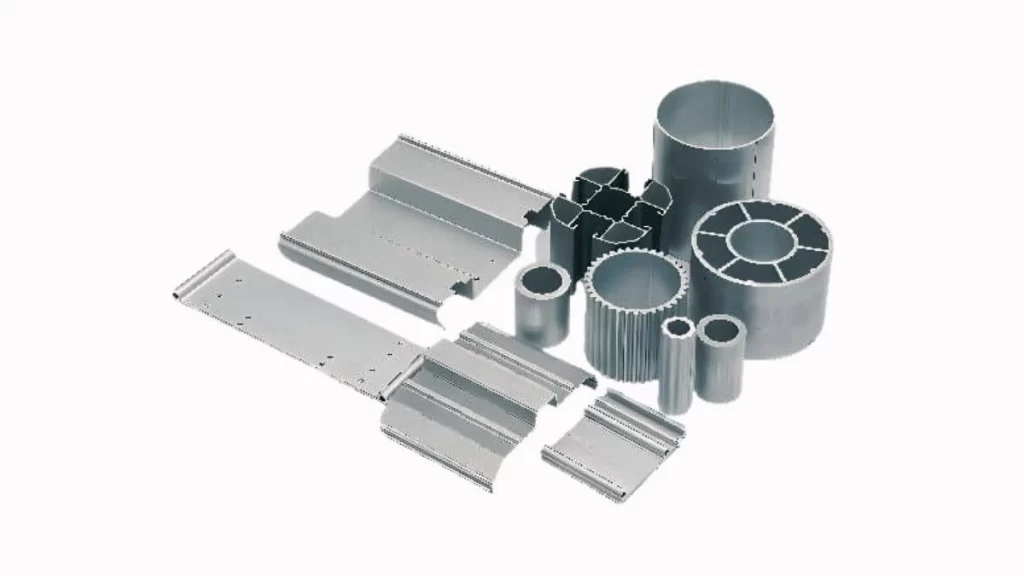
Custom Aluminum Extrusion Products
Below are a few tips to help you make the right choices for extrusion project:
Pick a Blended One
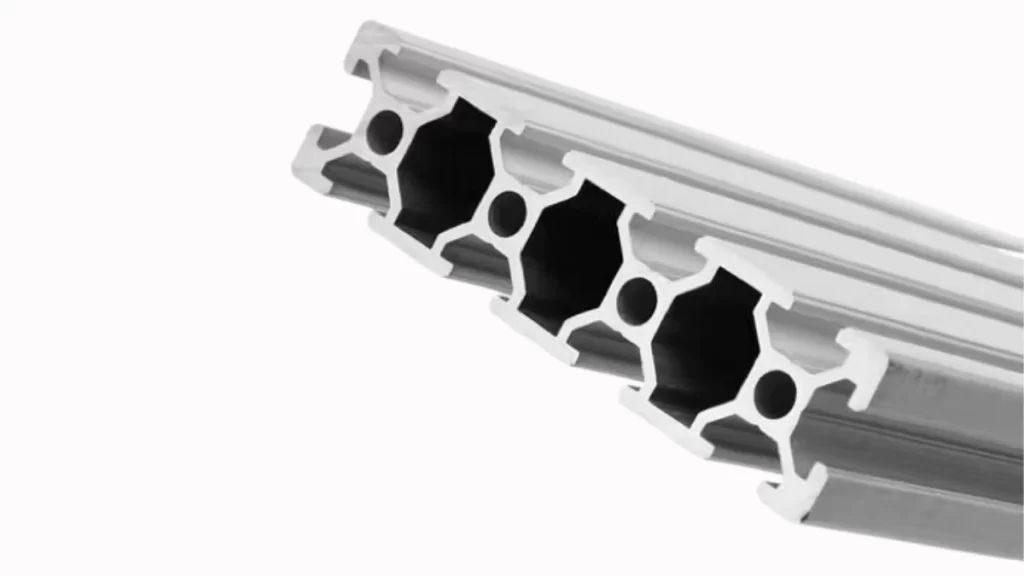
Aluminum Alloyed For Extrusion Use
Depending on the item usage in question, choose a blend on which an alloy can ride. If you are dealing with structural elements like frames and backing, think about high-strength mixtures like 6061 or 7075. For refined profiles or items that do not require as much care, 6063 and 3003 can offer some features of beauty with less wear down than other alloys. You must put more emphasis on the energy-to-balance ratio.
Sometimes, you need an equilibrium between weight and energy. These features can be found in 6061, a lightweight yet very strong option. In applications where weight is less critical than energy, for instance, aircraft structural sections, alloys like 2024 or 7075 may be the right fit.
Alloy properties
Some are fibrous, allowing them to be extruded easily and accurately. Alloys, such as 6063 and 3003,’ form well in a plastic or solid state. These are more manageable for creating deep and detailed articles. If you are designing something with tiny features, small serrated edges, or angular parts, these alloys will make the thing easier.
Weldability Rating
It is recommended to check alloy weldability when it needs to be welded after extrusion. 6061 can be listed at the top in this aspect. 7075 and similar alloys, on the other hand, lose out on the charts anyway just because they are less weldable. It’s a good idea to make a welding rule easily accessible and put your welding question into your project specifications to verify that the alloy you’re choosing will weld well.
Post-Processing Requirements
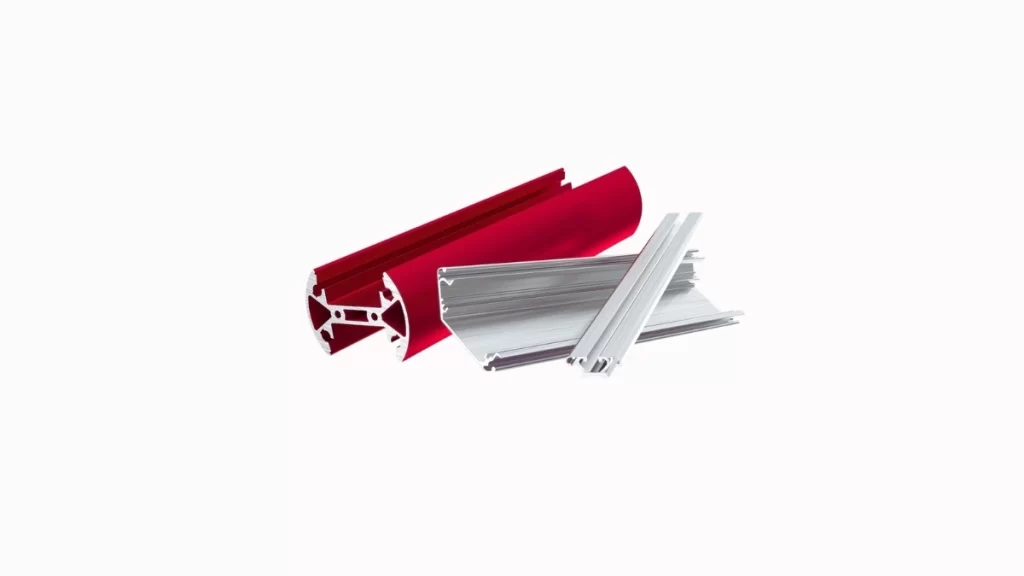
Anodized Aluminum Extruded Product
More complex post-processing steps like heat treatment or anodizing may be required for some special alloys, including 2024 or 7075, to achieve the desired outcomes.
Cost-Efficiency
When you are determining the option for your project, check the prices of various alloys. Generally, high-strength alloys (such as 7075 or 2024) perform better than low-strength varieties but come with a higher cost. Using 6063 or 3003 can keep prices down without significant performance issues for products with little wear or tear.
Applying Heat Treatments
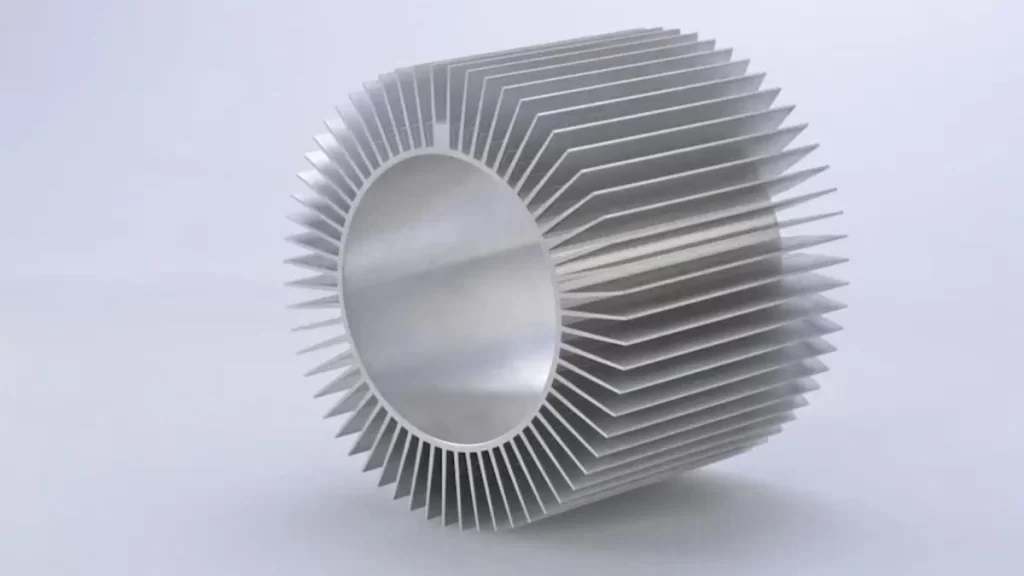
Aluminum Heat Treated Sink
The flesh of an alloy becomes apparent with its ultimate properties. Mixtures with T6 temper should be used if they have very strong and tough qualities to resist mechanical force over time. Indicate if the alloy has a T3 or T4 temper for more flexibility in handling after manufacturing.
Expert Advice is Key
If you have trouble making the choice, get in touch with an aluminum product or extrusion manufacturer. The divisions in firms – sales associates to tech or engineering shops – will always be ready and willing to help customers make the right decision. They can assist you in identifying the blend that’s ideal for your use case and spare you from costly missteps.
Comparing Aluminum Extrusion Alloys: Which One Is Right for Your Application?
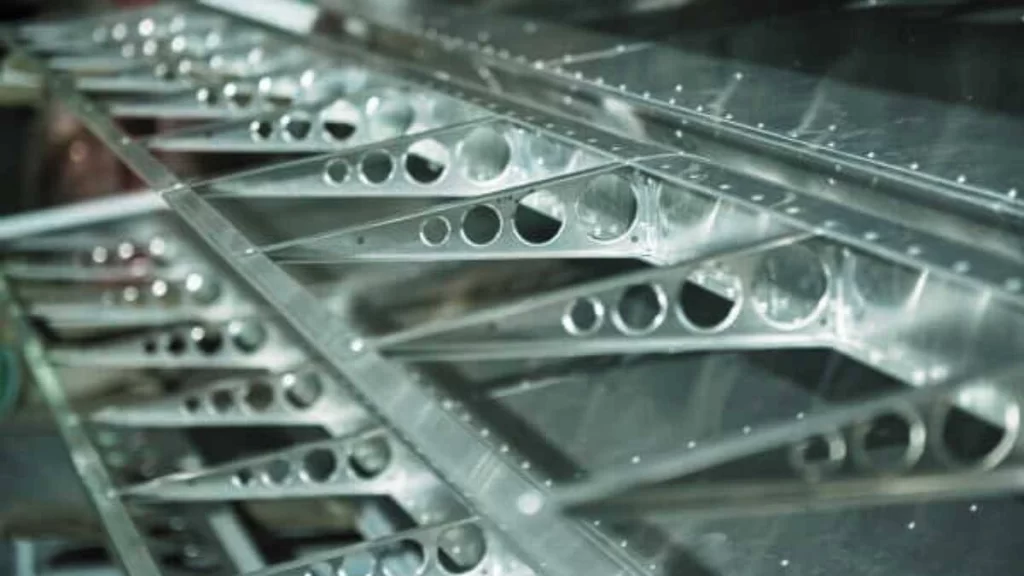
Extruded Aluminum For Aerospace Application
Here is a detailed comparison table of different aluminum extrusion alloys to help you choose the right one for your specific application:
| Alloy | Strength |
Corrosion Resistance |
Weldability | Applications | Temper |
|
1xxx Series |
Low to Moderate |
Excellent | Excellent |
Electrical conductors, heat exchangers, cookware |
H12, H14, H16, H18 |
| 6063 | Moderate | Good | Good |
Architectural, decorative, window frames |
T5, T6, T52 |
| 6061 | High | Good | Good |
Structural frames, aerospace, Marine applications |
T6, T651, T4 |
| 5052 |
Moderate to High |
Excellent | Good |
Marine, chemical tanks, fuel tanks |
H32, H34, H38 |
| 7075 | Very High | Fair | Poor |
Aerospace, military |
T6, T651 |
| 2024 | Very High | Good | Fair |
Aircraft structures, military vehicles |
T3, T4, T851 |
| 3003 |
Low to Moderate |
Good | Good |
Cooking utensils, roofing, siding |
H14, H16, H18 |
| 5083 | High | Excellent | Fair |
Marine structures, pressure vessels |
H111, H112, H116 |
| 6082 | High | Good | Good |
Structural applications, bridges, cranes |
T6, T651 |
|
6005/6005A |
Moderate | Good | Good |
Transportation, structural components |
T5, T6 |
Related To: 6061 vs 6063 aluminum
Aluminum Extrusion Terminologies
The aluminum extrusion process encompasses some specialized terminologies, each describing key factors in production.
Circle Size:
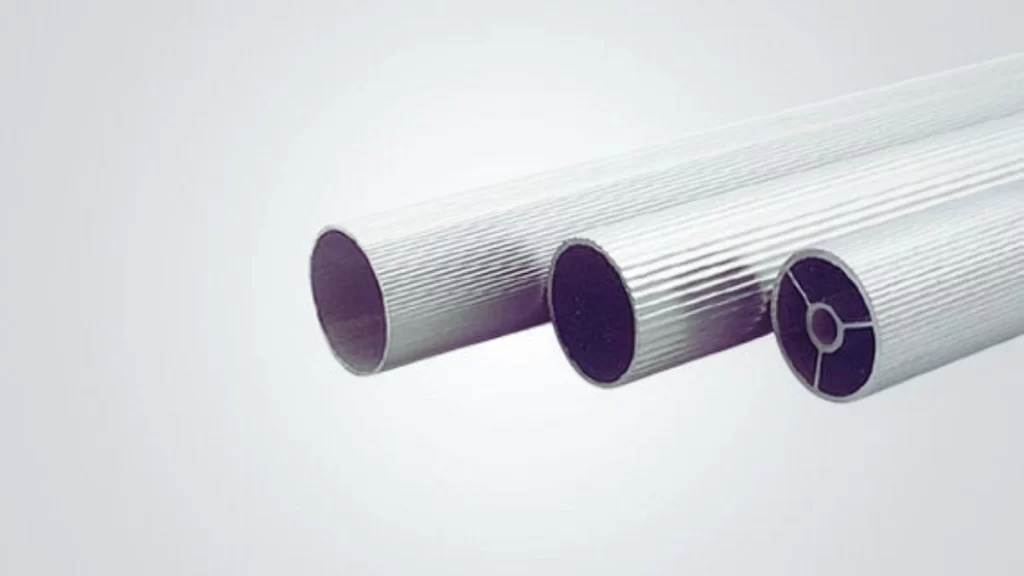
Aluminum Extruded Circular Profiles
It’s the size of the smallest circle that can completely fit around the part shape. It determines manufacturing feasibility and press size. Circle diameters normally range from 1” to 20” inches for ordinary shapes up to over 30″ inches in cases like highway guardrails.
Press Tonnage:
How much force the press can exert on the billet through its ram? Small presses range from under 1,000 tons up to 1,100 and 5,000 tons for the common type. While the specialized presses can reach as high as 12,000 tons.
Factor:
Factors determine the complexity of the extruding profile. In general, it is the ratio of a circle’s size to its surface perimeter. Shapes with more complex features have higher factors, making them challenging to produce.
Extrusion Ratio:
It measures the extrusion difficulty by comparing the cross-section areas of both the die opening and billet container. Higher ratios, like 75:1, are harder to extrude and might need some special presses and multi-hole dies.
Multihole Die:
It is a die that can extrude several profiles simultaneously. It handles shapes that are too long for a single billet.
Types of Hollow Section:
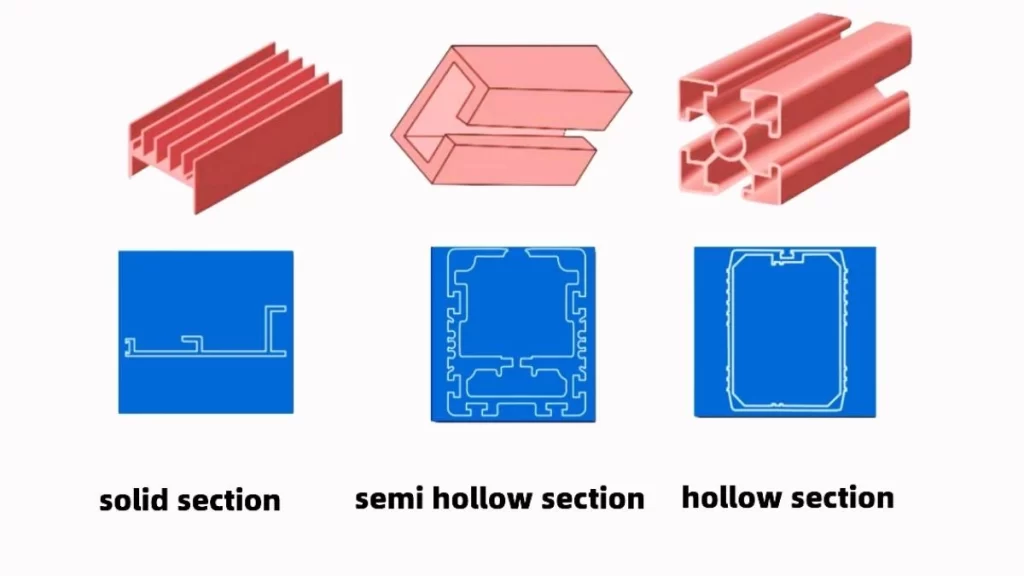
Types of Hollow Shapes
- Porthole Die Hollows: These are the most economical and used to manufacture hollow-long products. A two-part die separates the ingot; the metal “welds” through internal die passages.
- Bridge Die Hollows: Similar to porthole die hollows but with a distinct design. In its design, the mandrel is behind the die housing. It is stripped clear at the end of each billet to make sure smoother extrusions with no metal “welds” lactating out over surfaces.
Seamless Tube:
These tubes are made by piercing the billet before extrusion. It is generally used for round and square products. However, it is limited when internal configurations become complex.
Summary
Choosing the right aluminum alloy is not an easy task. You must pay attention not only to material characteristics but also to design, fabricating technique, and cost of processing and treatment. Besides, there are other variables, like the extrusion ratio and the press tonnage, to make sure the products are up to industry quality standards. To make the right choice, it’s advised to get in touch with experts.
Prolean Tech serves manufacturing industries with excellent aluminum extrusion services over decades of experience. Sourcing your project to us means you’re guaranteeing the desired results on your project. Since our team employs high-tech and craft standards. Furthermore, our prices are relatively affordable. So you can have high-end products by spending less. Got a query or order? Contact us right now, and get your projects done right!
FAQ’s
Q1. What aluminum alloys can be extruded?
Aluminum alloys such as 1000, 2000, 6000, and 7000 series are commonly used in extrusion applications. These provide properties like strength and formability.
Q2. What is the 15-series extruded aluminum alloy, and where is it used?
The 15-series is a specific category of T-slot framing systems, commonly used in industrial automation, machinery frames, and modular structures. These systems are designed with modular components, typically in a grid pattern of 15mm by 15mm, and are not typically used in aerospace or military applications
Q3. What are the advantages of using 6000-series aluminum alloys for extrusion?
6000-series alloys feature good corrosion resistance, medium to high strength, and ease of fabrication. These properties make them ideal for construction and transportation.
Q4. What factors should be considered when selecting an aluminum alloy for extrusion?
Consider your application, alloy properties like strength and formability, extrusion tonnage, and, more importantly, its cost. You must balance cost along with quality outcomes.
Q5. What are the common industries that use aluminum extrusion alloys?
Common industries include aerospace, structural, automotive, construction, and electronics due to the alloy’s strength and lightweight properties.
Q6. How does the choice of aluminum extrusion alloy impact the final product’s durability?
Generally speaking, choose the right tool for the right application because it influences the strength, corrosion resistance, and fatigue resistance for determining the functioning and product’s longevity.

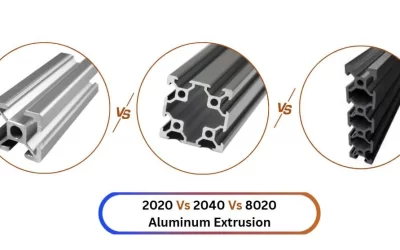
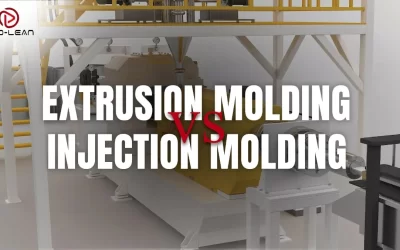
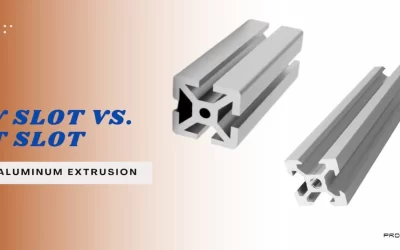
0 Comments